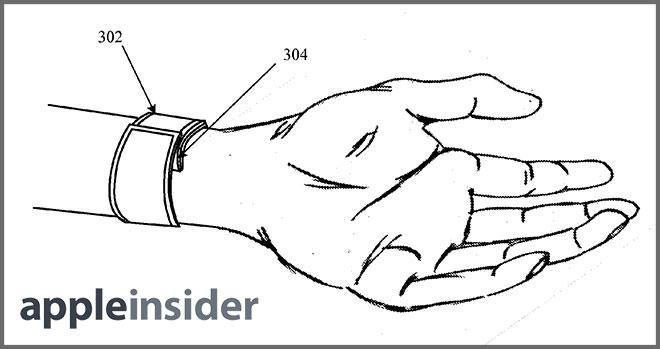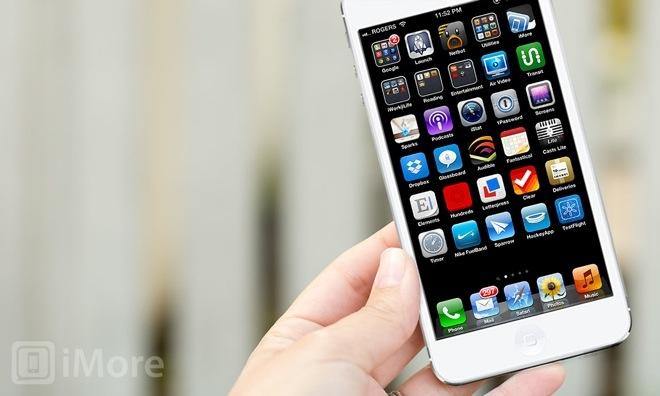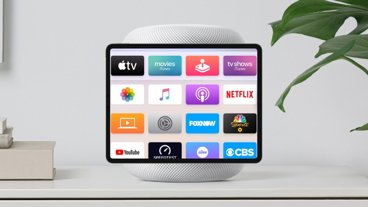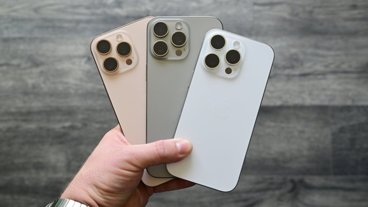Monday morning brought two questionable reports about Apple's plans for the future, with one Korean publication speculating that LG has won a contract to supply displays for Apple's still-unannounced "iWatch" and a Chinese website claiming a next-gen 4.7-inch iPhone will be unveiled at WWDC.
LG to manufacture iWatch displays
Seoul, South Korea-based LG is said to have secured an exclusive contract to manufacture 1.52-inch flexible P-OLED displays for Apple's so-called "iWatch." The purported production is said to begin in the second half of 2014, with a goal of producing 2 million displays in the first run.
The news was originally reported by Korea's Digital Daily, but the article was subsequently pulled from the website. A cached copy was found by G for Games.
Previous iWatch display rumors have focused on AMOLED technology from LG and others, with size predictions ranging from 1.2 inches to 2 inches on the diagonal. Notably absent from the OLED-predicting pack is well-connected analyst Ming-Chi Kuo of KGI Securities, who instead believes the device will leverage existing GF2 touchscreen technology found in the iPod nano.
Using flexible P-OLED displays would allow Apple to create a curved, wrist-hugging device — Â similar to patents the company has already been granted — but would likely increase the product's cost.
iPhone 6 to debut in June with 4.7-inch display
Chinese analyst Sun Changxu told Chinese-language website QQ Tech that she expects production on Apple's next-generation iPhone to ramp up as soon as May in preparation for a debut at the company's Worldwide Developers Conference in June. The so-called "iPhone 6" would sport a 4.7-inch, 1136 pixel-by-640 pixel display, with a higher-resolution 5.7-inch "phablet" variant to follow.
The 4.7-inch screen size has been mentioned in connection with the iPhone 6 before, but the cited resolution does not match previous rumors. DisplaySearch vice president David Hsieh said last October that he expects a 4.7-inch iPhone with a 1280 pixel-by-720 pixel, or 720p, display.
Earlier this month, DisplaySearch updated its predictions. The firm still believes Apple is targeting a 4.7-inch display, but has now shifted to a 1920 pixel-by-1080 pixel "Full HD" resolution.
 Shane Cole
Shane Cole







-m.jpg)






 Charles Martin
Charles Martin


 Wesley Hilliard
Wesley Hilliard
 Stephen Silver
Stephen Silver
 William Gallagher
William Gallagher

 Marko Zivkovic
Marko Zivkovic







80 Comments
Just have to wait and see people.... geesh.
1) Sure, a larger display iPhone could certainly happen but I do wonder about the resolution of the display. The easiest solution is to use the same resolution they currently have so that they SDK and apps don't negatively affect developers and consumers, but that's easier to achieve going down than going up. Does going from 326 PPI to 277 PIP in a 4.7" display still make it Retina? That would mean it would need to be held 12.4" from the eyes for someone with 20/20(6/6) vision for the effect to be achieved at its minimum. 2) I wouldn't be surprised if an iWatch is "flexible" insofar that it can be curved into a static design but I wouldn't expect for the customer to experience this flexibility.
How to make a bigger screen without making the iPhone bigger?
That concept phone is hideous. IF Apple is making a larger phone then they need to rethink the UI. I'm not sure rows and rows of apps/folders is the way to go. Have a place to go where I can see all my apps in alphabetic order or grouped by app type. But then make the home screen more customizable. Do it on the iPad too.
[quote name="acatomic" url="/t/161650/rumor-large-screen-iphone-6-in-june-iwatch-to-use-flexible-lg-oled-display#post_2460073"]How to make a bigger screen without making the iPhone bigger?[/quote] The most important value to consider is how it feels in your hand. With a 4.7" display — if we assume the same aspect ratio — it may be impossible in terms of the [U]width[/U] of the phone when holding it in your hand to move to a 0.3" wider display. [LIST] [*] 4.0" with 1.78 aspect ratio = 2.0" wide x 3.5" tall = 6.84 sq in. [*] 4.7" with 1.78 aspect ratio = 2.3" wide x 4.1" tall = 9.44 sq in. [/LIST] If there is 0.15" on each side of the iPhone it would be just barely and you still need some frame for durability. Apple could also reduce the thickness of the device which can now be spread over the volume of the device with a larger footprint but even that would still likely all result in slightly less usability in using just your thumb whilst in one hand. That isn't to say these cons outweigh the pros and we've seen Apple weigh all aspects of the device with the iPad 3 by making it much thicker and heavier in order to support the Retina display. With large smartphones becoming the norm (after years of anti-Apple comments of the iPhone being too big) I can see Apple addressing the best way to create a larger iPhone with little impact to the increase in size. It would surely be less than what the iPad 3 and 4 experienced over the iPad 2.